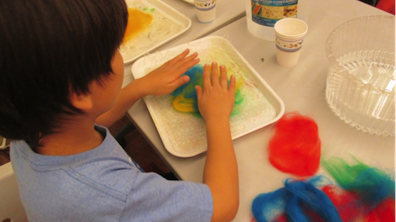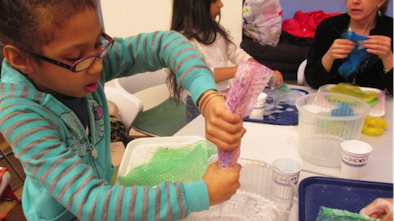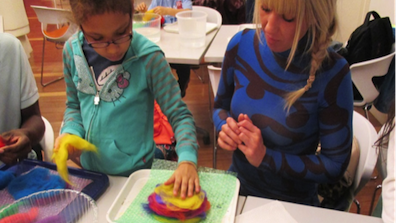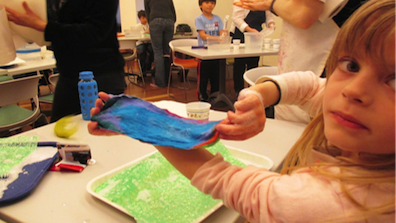
Felting is a tradition held by many throughout the world. Felt is the oldest textile, predating knitted and woven cloth. Today, felt is created primarily in what is known as the “Felt Belt,” a region that runs through Central Asia. The people of this regions use yaks and sheep as a wool source and make everything from boots, hats, bags, and belts to the walls of houses. Earlier this month, we explored the Himalayan art of felting in our Family Art Lab.
The Lab began with an exploration of the Museum, during which we looked for artworks with yaks, searched for felted hats, and a told the story of the Buddha.
After the tour, we were ready to craft our own felt. We began with sheep wool that was dyed vibrant colors. Felting entails mixing wool with warm and cool soapy water and agitating the fibers repeatedly to bind them together. To aid in the agitation process, we used an unusual material ““ bubble wrap!

Families chose their colors, layered the wool to create swirls of color, and then repeatedly agitated the fibers until their felt was complete.
“I had no idea felting was so easy!” said one of our participants, who was surprised that something so simple could be so fun.
Stay tuned for next month’s Family Art Lab, where we’ll explore the Museum’s new exhibition Becoming Another: The Power of Masks and create our own magical masks.



